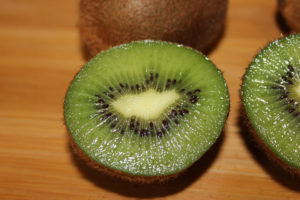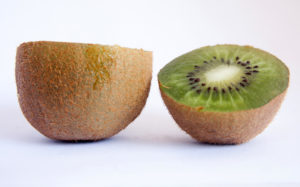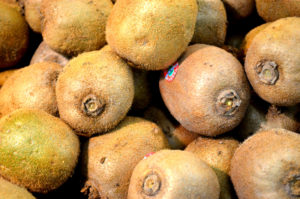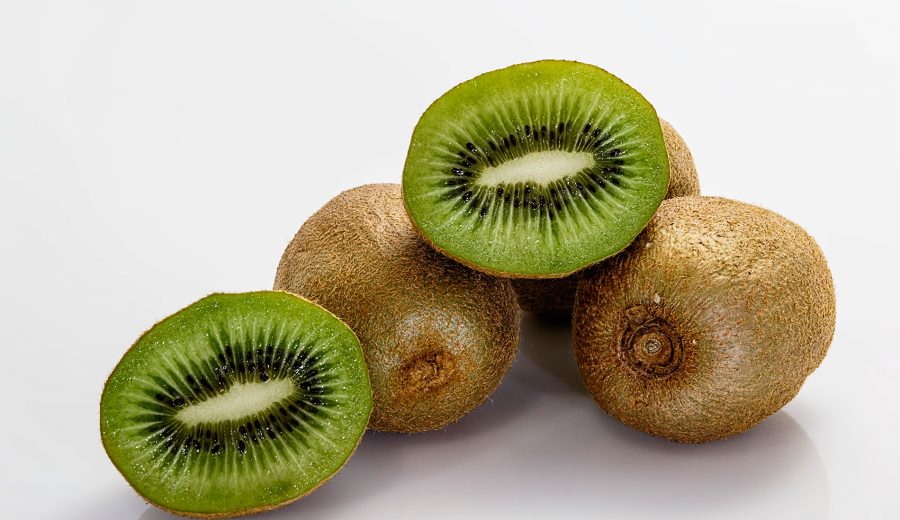Kiwifruit, often abbreviated as kiwi and also known as Chinese gooseberry, is the edible berry of several species of woody vines in the genus Actinidia. Take a look below for 26 more fun and interesting facts about kiwifruit.
1. The most common cultivar group of kiwifruit, Hayward, is oval, 5 to 8 centimeters, or 2 to 3.1 inches, in length and 4.5 to 5.5 centimeters, or 1.8 to 2.2 inches, in diameter.
2. Kiwifruit has a fibrous, dull greenish-brown skin and bright green or golden flesh with rows of tiny, black, edible seeds.
3. Kiwifruit has a soft texture and a sweet but unique flavor.
4. It’s a commercial crop in several countries, such as China, Italy, New Zealand, Chile, Greece and France.

5. Early varieties of kiwifruit were described in a 1904 nurseryman’s catalog as having edible fruits the size of walnuts and the flavor of ripe gooseberries, which is why the Europeans called it Chinese gooseberry.
6. In 1962, New Zealand growers began calling the fruit “kiwifruit” for export marketing, a name that became commercially adopted in 1974.
7. The word “kiwifruit” and the shortened “kiwi”, have been used since around 1966, when the fruit was first imported from New Zealand to the United States.
8. In New Zealand, the shortened word, “kiwi,” is rarely used to refer to the fruit as it usually refers to the kiwi bird or the Kiwi people.
9. There are around 60 different species of kiwifruit and hundreds of varieties that are usually cultivated in temperate regions around the world.
10. Kiwifruit grows as a vine and it can reach the length of 33 feet. Domesticated varieties of kiwifruit require seasonal pruning.
11. Kiwifruit has dark green heart shaped leaves that are spirally arranged on the stem.

12. Each plant of kiwifruit develops either male or female reproductive organs, making them dioecious plants. Two types of plants need to grow close to one another to ensure successful pollination and production of fruit.
13. Bees are the main pollinators of kiwifruit. However, farmers sometimes pollinate kiwifruit on their own by spreading large quantities of pollen toward the female plants.
14. Botanically, kiwifruit belongs to a group of berries. It has brown fuzzy skin, bright green flesh and circle of dark seeds in the middle of the fruit.
15. The size, color of the skin, color of the flesh, the taste and texture of kiwifruit depend on the species. Hairless varieties of kiwifruit are also commercially available.
16. There are over one million tons of kiwifruit that are produced each year. The majority of kiwifruit is produced in Italy, New Zealand and Chile.
17. Kiwifruit has two times more vitamin C than oranges. It’s also a rich source of vitamin E and K. Compared to other fruits, kiwifruit has the most amount of vitamins and fibers per gram of fruit.

18. It can be eaten raw or in the form of juices. It can also be used as park of cakes, ice creams and other desserts. However, high temperatures during cooking or baking changes the taste and color of the fruit.
19. Kiwifruit has a protein called actinidain which softens meat. Actinidain digests proteins in milk and gelatin and prevents solidification of desserts.
20. The first recorded description of the kiwifruit dates back to the 12th century China during the Song dynasty.
21. Even though kiwifruit is a national fruit of China, until recently, China wasn’t a major producing country of kiwifruit, as it was traditionally collected from the wild.
22. Kiwifruit became popular with American servicemen stationed in New Zealand during World War II and was later exported to California using the names “Chinese gooseberry” and “melonette.”
23. The actinidain found in kiwifruit can be an allergen for some individuals, including children. The most common symptoms are unpleasant itching and soreness of the mouth, with wheezing as the most common severe symptom.

24. Traditionally in China, kiwifruit was not eaten for pleasure, but was given as medicine to children to help them grow and to women who have given birth to help them recover.
25. The golden kiwifruit, Actinidia chinensis, has a smooth, bronze skin, with a beak shape at the stem attachment. Fresh color varies from bright green to a clear, intense yellow.
26. The golden kiwifruit is sweeter and more aromatic in flavor. The flavor is reminiscent of some subtropical fruit.




